Soundwalk, Questionnaires and Noise Measurements in a University Campus: A Soundscape Study
Abstract
1. Introduction
2. Literature Review and Data Collection Methods
Methods of Data Collection
3. Materials and Methods
3.1. Methodology
3.2. Case Study and Soundwalk Details
4. Results and Discussion
5. Conclusions
Author Contributions
Funding
Institutional Review Board Statement
Informed Consent Statement
Data Availability Statement
Acknowledgments
Conflicts of Interest
Appendix A
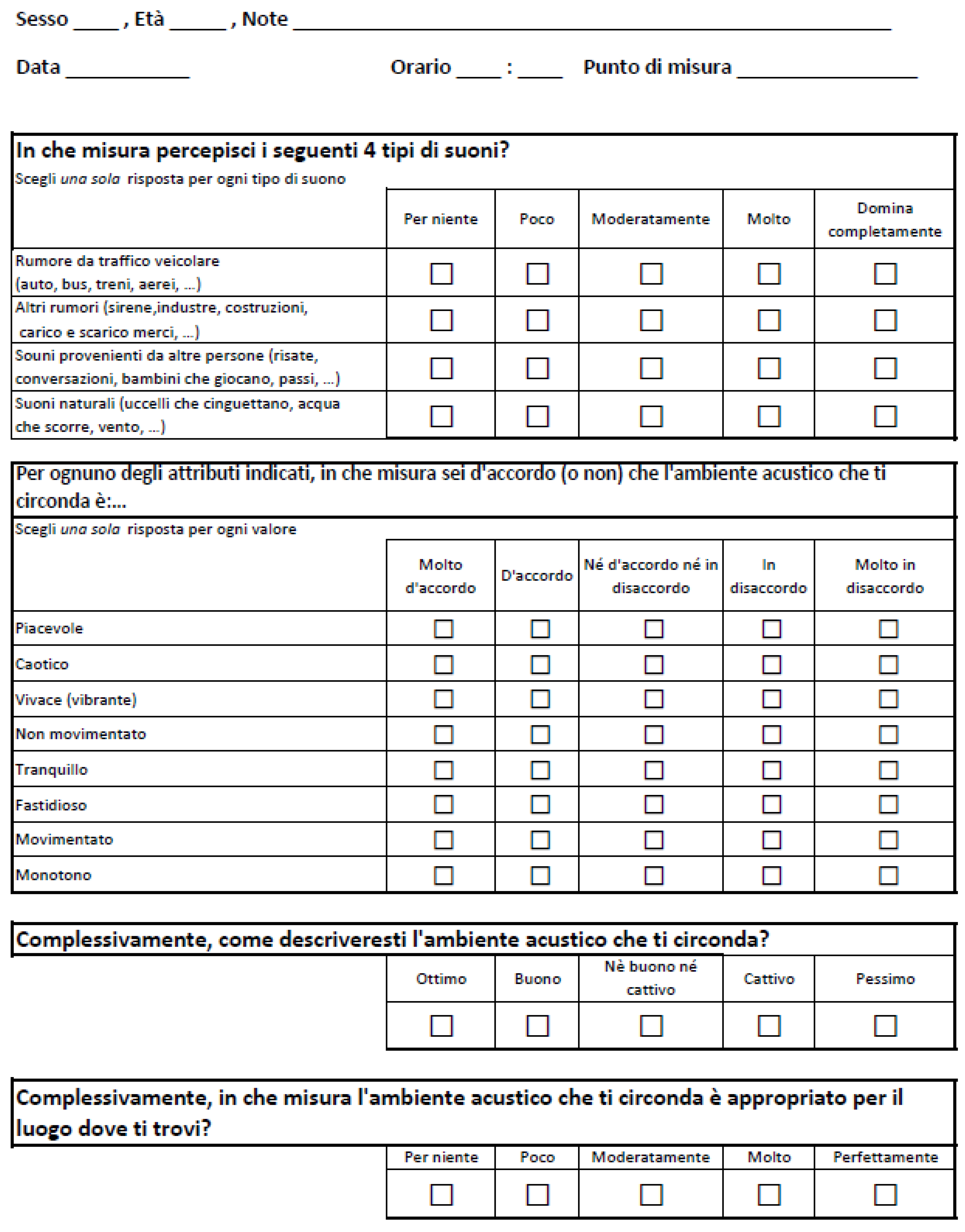
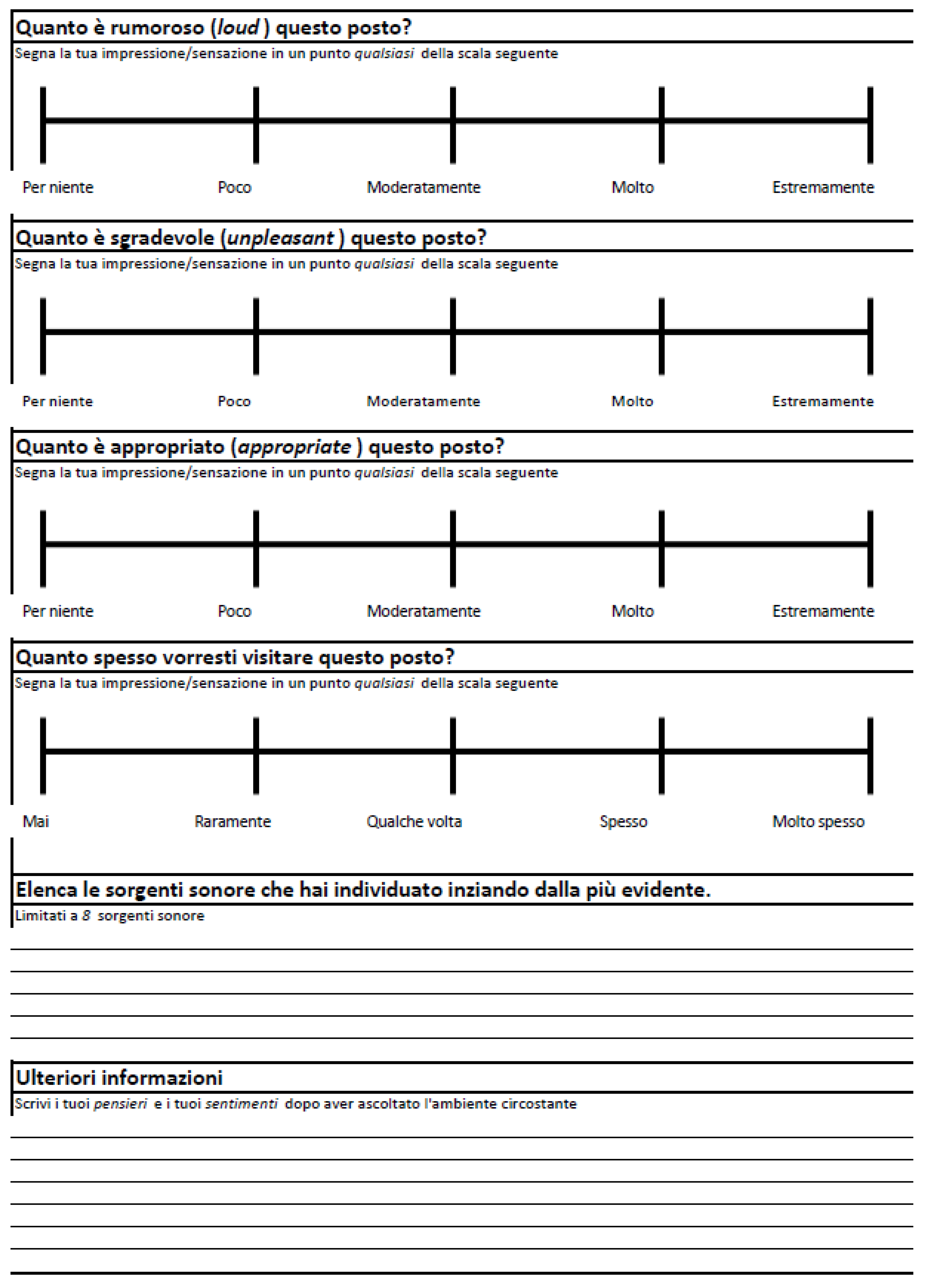
References
- EEA. Environmental Noise in Europe-2020, Report No 22/2019. 2020. Available online: https://www.eea.europa.eu/publications/environmental-noise-in-europe (accessed on 3 November 2020).
- EC. Directive 2002/49/EC of the European parliament and the Council of 25 June 2002 relating to the assessment and management of environmental noise. Off. J. Eur. Communities 2002, 189, 12–25. [Google Scholar]
- Scrosati, C.; Scamoni, F.; Zambon, G. Uncertainty of façade sound insulation in buildings by a Round Robin Test. Appl. Acoust. 2015, 96, 27–38. [Google Scholar] [CrossRef]
- Aletta, F.; Kang, J.; Axelsson, Ö. Soundscape descriptors and a conceptual framework for developing predictive soundscape models. Landsc. Urban Plan. 2016, 149, 65–74. [Google Scholar] [CrossRef]
- Guarnaccia, C.; Quartieri, J.; Tepedino, C.; Rodrigues, E.R. An analysis of airport noise data using a non-homogeneous Poisson model with a change-point. Appl. Acoust. 2015, 91, 33–39. [Google Scholar] [CrossRef]
- Guarnaccia, C.; Mastorakis, N.E.; Quartieri, J. Wind turbine noise: Theoretical and experimental study. Int. J. Mech. 1977, 5, 129–137. [Google Scholar]
- Guarnaccia, C.; Quartieri, J.; Rodrigues, E.R.; Tepedino, C. Acoustical noise analysis and prediction by means of multiple seasonality time series model. Int. J. Math. Mod. Meth. Appl. Sci. 2014, 8, 384–393. [Google Scholar]
- Milliman, R.E. Using Background Music to Affect the Behavior of Supermarket Shoppers. J. Mark. 1982, 46, 86–91. [Google Scholar] [CrossRef]
- Brown, A.L. Soundscape Planning as a Complement to Environmental Noise Management. In Proceedings of the 43rd International Congress on Noise Control Engineering: Improving the World through Noise Control, Melbourne, Australia, 16–19 November 2014; Australian Acoustical Society: Brisbane, Australia, 2014; pp. 1–10. [Google Scholar]
- International Organization for Standardization (2014). ISO 12913–1:2014 Acoustics —Soundscape—Part. 1: Definition and Conceptual Framework; ISO: Geneva, Switzerland, 2014. [Google Scholar]
- International Organization for Standardization (2018). ISO/TS 12913–2:2018 Acoustics —Soundscape—Part. 2: Data Collection and Reporting Requirements; ISO: Geneva, Switzerland, 2018. [Google Scholar]
- International Organization for Standardization (2019). ISO/TS 12913-3:2019 Acoustics—Soundscape—Part. 3: Data Analysis; ISO: Geneva, Switzerland, 2019. [Google Scholar]
- Schafer, R.M. The Tuning of the World: Toward a Theory of Soundscape Design; Alfred A. Knopf: New York, NY, USA, 1977. [Google Scholar]
- Jeon, J.Y.; Lee, P.J. Soundwalk approach to identify urban soundscapes individually. J. Acoust. Soc. Am. 2013, 134, 803–812. [Google Scholar] [CrossRef]
- Adams, M.D.; Bruce, N.S.; Davies, W.J.; Cain, R.; Jennings, P.; Carlyle, A.; Cusack, P.; Hume, K.; Plack, C. Soundwalking as a methodology for understanding soundscapes. In Proceedings of the Institute of Acoustics Spring Conference “Widening Horizons in Acoustics”, Reading, UK, 10–11 April 2008; Curran Associates: Red Hook, NY, USA, 2008; pp. 552–558. [Google Scholar]
- Aletta, F.; Guattari, C.; Evangelisti, L.; Asdrubali, F.; Oberman, T.; Kang, J. Exploring the compatibility of “Method A” and “Method B” data collection protocols reported in the ISO/TS 12913-2:2018 for urban soundscape via a soundwalk. Appl. Acoust. 2019, 155, 190–203. [Google Scholar] [CrossRef]
- Raimbault, M.; Dubois, D. Urban soundscapes: Experiences and knowledge. Cities 2015, 22, 339–350. [Google Scholar] [CrossRef]
- Liu, J.; Kang, J.; Behm, H.; Luo, T. Effects of landscape on soundscape perception: Soundwalks in city parks. Landsc. Urban. Plan. 2014, 123, 30–40. [Google Scholar] [CrossRef]
- Thompson, E. The Soundscape of Modernity: Architectural Acoustics and the Culture of Listening in America 1900–1933; The MIT Press: Cambridge, MA, USA, 2004. [Google Scholar]
- Truax, B. Handbook for acoustic ecology. In The Music of the Environment Series; Cambridge Street Publishing: Burnaby, BC, Canada, 1999. [Google Scholar]
- Cain, R.; Jennings, P.; Adams, M.; Bruce, N.; Carlyle, A.; Cusack, P.; Davies, W.; Hume, K.; Plack, C.J. SOUND-SCAPE: A framework for characterising positive urban soundscapes. J. Acoust. Soc. Am. 2008, 123, 3394. [Google Scholar] [CrossRef]
- Biocca, F.; Harms, C.; Burgoon, J. Towards a more robust theory and measure of social presence: Review and suggest criteria. Presence 2003, 12, 456–480. [Google Scholar] [CrossRef]
- Fotios, S.; Unwin, J.; Farrall, S. Road lighting and pedestrian reassurance after dark: A review. The society of light and lighting. Lighting Res. Technol. 2015, 47, 449–469. [Google Scholar] [CrossRef]
- Medvedev, O.; Shepherd, D.; Hautus, M.J. The restorative potential of soundscapes: A physiological investigation. Appl. Acoust. 2015, 96, 20–26. [Google Scholar] [CrossRef]
- Schafer, R.M. The Soundscape: Our Sonic Environment and the Tuning of the World; Destiny Books: Rochester, VT, USA, 1994. [Google Scholar]
- Zhang, X.; Ba, M.; Kang, J.; Meng, Q. Effect of soundscape dimensions on acoustic comfort in urban open public spaces. Appl. Acoust. 2017, 133, 73–81. [Google Scholar] [CrossRef]
- Rossi, G.B.; Berglund, B. Measurement involving human perception and interpretation. Measurement 2011, 44, 815–822. [Google Scholar] [CrossRef]
- Kang, J. Noise Management: Soundscape Approach. Encyclopedia of Environmental Health, 2nd ed.; Elsevier: Amsterdam, The Netherlands, 2019; pp. 683–694. [Google Scholar]
- Van Kempen, E.; Devilee, J.; Swart, W.; Van Kamp, I. Characterizing urban areas with good sound quality: Development of a research protocol. Noise Health 2014, 16, 380–387. [Google Scholar] [CrossRef]
- Aletta, F.; Kang, J. Descriptors and indicators for soundscape design: Vibrancy as an example. In Proceedings of the InterNoise Conference, Hamburg, Germany, 21–24 August 2016; Institute of Noise Control Engineering: Hamburg, Germany, 2016; pp. 2908–2913. [Google Scholar]
- Schulte-Fortkamp, B.; Fiebig, A. Impact of Soundscape in Terms of Perception. In Soundscape and the Built Environment; Taylor & Francis Group: Abingdon, UK, 2016. [Google Scholar]
- Zwicker, E. A proposal for defining and calculating the unbiased annoyance. In Contribution to Psychological Acoustics; BIS Verlag: Oldenburg, Germany, 1991. [Google Scholar]
- Preis, A. Environmental approach to noise. Contributions to Psychological Acoustics: Results of the Seventh Oldenburg Symposium on Psychological Acoustics. In Contributions to Psychological Acoustics; BIS Verlag: Oldenburg, Germany, 1997. [Google Scholar]
- Fiebig, A.; Guidati, S.; Goehrke, A. Psychoacoustic evaluation of traffic noise. In Proceedings of the NAG-DAGA Conference, Rotterdam, Germany, 23–26 March 2009. [Google Scholar]
- Lavandier, C.; Defréville, B. The contribution of sound source characteristics in the assessment of urban soundscapes. Acta Acust. Acust. 2006, 92, 912–921. [Google Scholar]
- Licitra, G.; Memoli, G.; Botteldooren, D.; De Coensel, B. Traffic noise and perceived loudness: A case study. In Proceedings of the Forum Acusticum, Budapest, Hungary, 29 August–2 September 2005. [Google Scholar]
- Pheasant, R.J.; Horoshenkov, K.V.; Watts, G.R. The role of audio-visual interaction on the perception of tranquility. In Proceedings of the Euronoise Conference, Edinburgh, UK, 26–28 October 2009. [Google Scholar]
- Botteldooren, D.; De Coensel, B.; De Muer, T. The temporal structure of urban soundscapes. J. Sound Vib. 2006, 292, 105–123. [Google Scholar] [CrossRef]
- Axelsson, Ö.; Nilsson, M.; Berglund, B. A principal components model of soundscape perception. J. Acoust. Soc. Am. 2010, 128, 2836–2846. [Google Scholar] [CrossRef] [PubMed]
- Cain, R.; Jennings, P.; Poxon, J. The development and application of the emotional dimensions of a soundscape. Appl. Acoust. 2013, 74, 232–239. [Google Scholar] [CrossRef]
- Davies, W.J.; Adams, M.D.; Bruce, N.S.; Cain, R.; Carlyle, A.; Cusack, P.; Hall, D.A.; Hume, K.I.; Irwin, A.; Jennings, P.; et al. Perception of soundscapes: An interdisciplinary approach. Appl. Acoust. 2013, 74, 224–231. [Google Scholar] [CrossRef]
- Payne, S.R. The production of a Perceived Restorativeness Soundscape Scale. Appl. Acoust. 2013, 74, 255–263. [Google Scholar] [CrossRef]
- García Pérez, I.; Aspuru Soloaga, K.; Herranz-Pascual, I.; García-Borreguero, I. Validation of an indicator for the assessment of the environmental sound in urban places. In Proceedings of the Euronoise 2012 Conference, Prague, Cech Republic, 10–13 June 2012. [Google Scholar]
- Ricciardi, P.; Delaitre, P.; Lavandier, C.; Torchia, F.; Aumond, P. Sound quality indicators for urban places in Paris cross-validated by Milan data. J. Acoust. Soc. Am. 2015, 138, 2337–2348. [Google Scholar] [CrossRef] [PubMed]
- Axelsson, Ö. How to measure soundscape quality. In Proceedings of the Euronoise 2015 Conference, Maastricht, UK, 31 May–3 June 2015; pp. 1477–1481. [Google Scholar]
- Can, A.; Gauvreau, B. Describing and classifying urban sound environments with a relevant set of physical indicators. J. Acoust. Soc. Am. 2015, 137, 208–218. [Google Scholar] [CrossRef] [PubMed]
- Maffei, L.; Masullo, M.; Aletta, F.; Di Gabriele, M. The influence of visual characteristics of barrier on railway noise perception. Sci. Total Environ. 2013, 445–446, 41–47. [Google Scholar] [CrossRef] [PubMed]
- Aletta, F.; Van Renterghem, T.; Botteldooren, D. Can attitude towards greenery improve road traffic noise perception? A case study of a highly-noise exposed cycling path. In Proceedings of the 11th European Congress and Exposition on Noise Control Engineering, Hersonissos, Greece, 27–31 May 2018; pp. 2377–2382. [Google Scholar]
- D’Alessandro, F.; Evangelisti, L.; Guattari, C.; Grazieschi, G.; Orsini, F. Influence of visual aspects and other features on the soundscape assessment of a University external area. Build. Acoust. 2018, 25, 199–217. [Google Scholar] [CrossRef]
- Trombetta Zannin, P.H.; Engel, M.S.; Kirrian Fiedler, P.E.; Bunn, F. Characterization of environmental noise based on noise measurements, noise mapping and interviews: A case study at a university campus in Brazil. Cities 2013, 31, 317–327. [Google Scholar] [CrossRef]
- Schule-Fortkcamp, B.; Jordan, P. When soundscape meets architecture. Noise Mapp. 2016, 3, 216–231. [Google Scholar]
- Mascolo, A.; Mancini, S.; Graziuso, G.; Quartieri, J.; Guarnaccia, C. Comparison between Sound Pressure Levels and Perception: A Soundscape Application in a University Campus. J. Phys. Conf. Ser. 2020, 1603, 012026. [Google Scholar] [CrossRef]
- Brambilla, G.; Gallo, V.; Zambon, G. The Soundscape Quality in Some Urban Parks in Milan, Italy. Int. J. Environ. Res. Public Health 2013, 10, 2348–2369. [Google Scholar] [CrossRef] [PubMed]
- Yu, L.; Kang, J. Factors influencing the sound preference in urban open spaces. Appl. Acoust. 2010, 71, 622–633. [Google Scholar] [CrossRef]
- Aletta, F.; Oberman, T.; Axelsson, Ö.; Xie, H.; Zhang, Y.; Lau, S.-K.; Tang, S.-K.; Jambrošić, K.; De Coensel, B.; van den Bosch, K.; et al. Soundscape assessment: Towards a validated translation of perceptual attributes in different languages. In Proceedings of the Internoise 2020 Conference, Seoul, Korea, 23–26 August 2020. [Google Scholar]





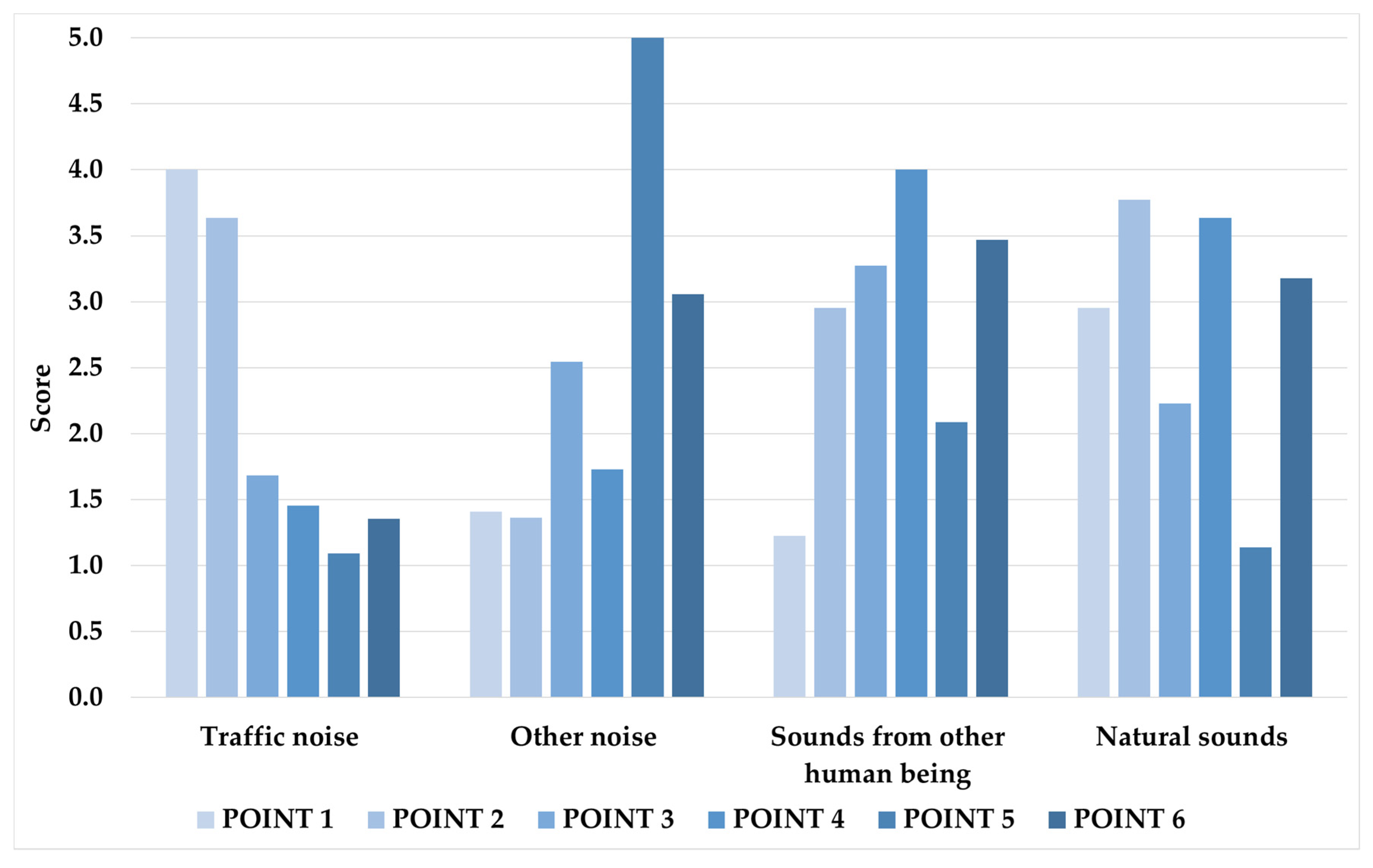
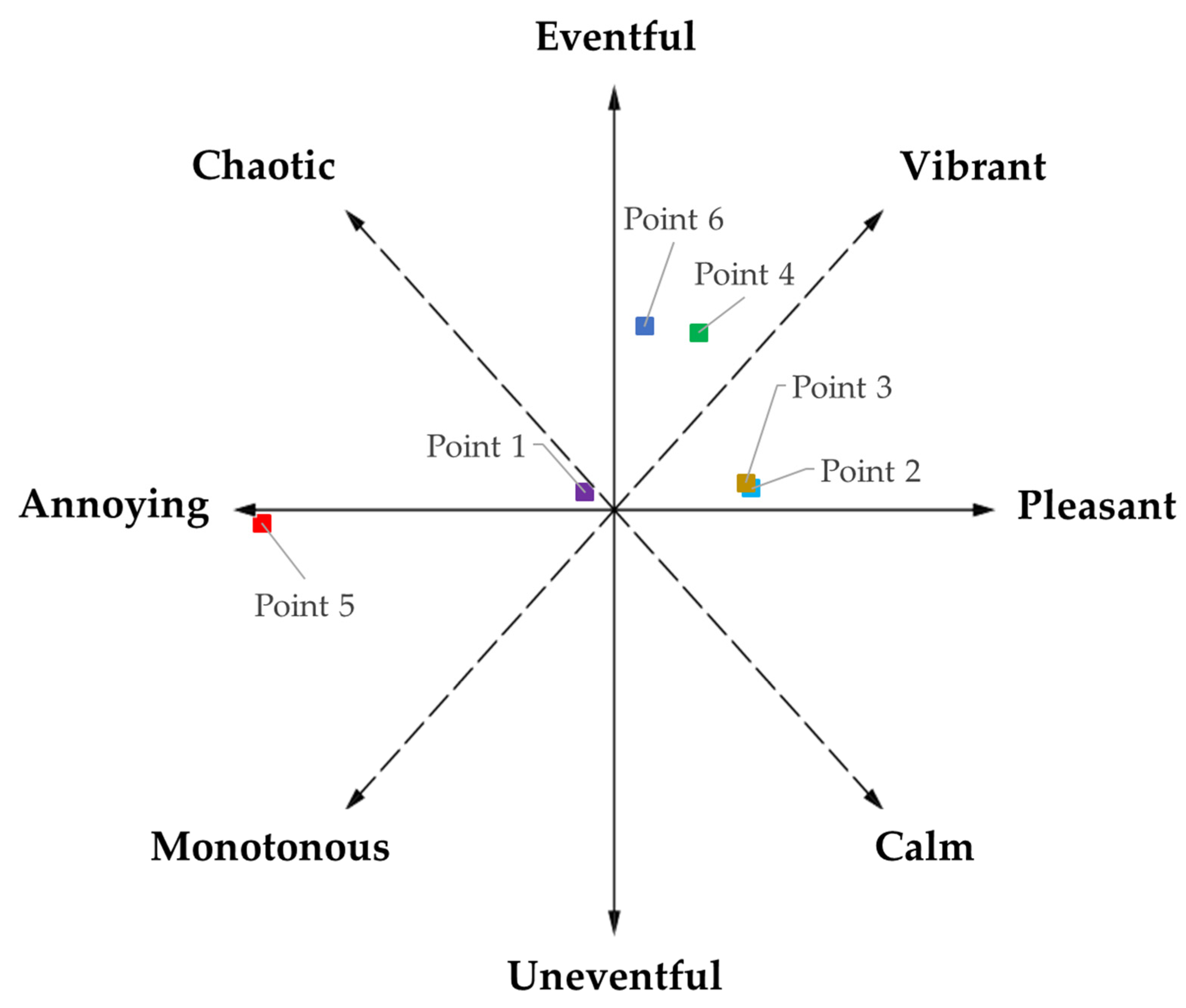


| Location | Description | Picture of the Site during the Soundwalk |
|---|---|---|
| Point 1 | Vehicles entrance and parking lots |  |
| Point 2 | Main park, close to the scientific library |  |
| Point 3 | Rectorate square, close to the main library |  |
| Point 4 | Central square, close to a fountain and a bar (vibrant area) |  |
| Point 5 | External area, outside building F (close to HVAC plants) | 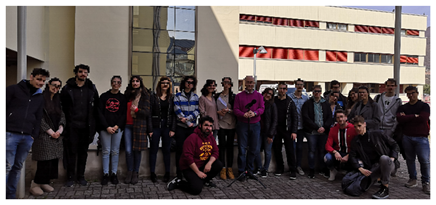 |
| Point 6 | Way to the bus station and canteen | 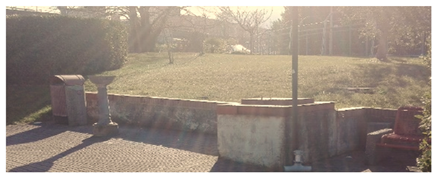 |
| Measurement | Point 1 | Point 2 | Point 3 | Point 4 | Point 5 | Point 6 |
|---|---|---|---|---|---|---|
| Leq (dBA) | 55.2 | 53.3 | 48.3 | 57.0 | 68.2 | 55.4 |
| Measurement | Point 1 | Point 2 | Point 3 | Point 4 | Point 5 | Point 6 |
|---|---|---|---|---|---|---|
| Pleasant (Piacevole) | 3.1 | 3.9 | 3.7 | 3.5 | 1.1 | 3.2 |
| Chaotic (Caotico) | 2.9 | 2.7 | 2.6 | 3.3 | 3.6 | 3.4 |
| Vibrant (Vivace/Vibrante) | 2.3 | 3.1 | 3.2 | 3.8 | 2.2 | 3.8 |
| Uneventful (Non movimentato) | 2.2 | 2.5 | 2.5 | 1.8 | 3.1 | 1.8 |
| Calm (Tranquillo) | 2.9 | 3.7 | 3.5 | 2.6 | 1.3 | 2.5 |
| Annoying (Fastidioso) | 2.7 | 2.1 | 2.1 | 2.5 | 4.9 | 2.9 |
| Eventful (Movimentato) | 3.5 | 3.5 | 3.4 | 4.2 | 2.6 | 4.2 |
| Monotonous (Monotono) | 3.5 | 2.8 | 2.7 | 2.1 | 4.3 | 2.3 |
Publisher’s Note: MDPI stays neutral with regard to jurisdictional claims in published maps and institutional affiliations. |
© 2021 by the authors. Licensee MDPI, Basel, Switzerland. This article is an open access article distributed under the terms and conditions of the Creative Commons Attribution (CC BY) license (http://creativecommons.org/licenses/by/4.0/).
Share and Cite
Mancini, S.; Mascolo, A.; Graziuso, G.; Guarnaccia, C. Soundwalk, Questionnaires and Noise Measurements in a University Campus: A Soundscape Study. Sustainability 2021, 13, 841. https://doi.org/10.3390/su13020841
Mancini S, Mascolo A, Graziuso G, Guarnaccia C. Soundwalk, Questionnaires and Noise Measurements in a University Campus: A Soundscape Study. Sustainability. 2021; 13(2):841. https://doi.org/10.3390/su13020841
Chicago/Turabian StyleMancini, Simona, Aurora Mascolo, Gabriella Graziuso, and Claudio Guarnaccia. 2021. "Soundwalk, Questionnaires and Noise Measurements in a University Campus: A Soundscape Study" Sustainability 13, no. 2: 841. https://doi.org/10.3390/su13020841
APA StyleMancini, S., Mascolo, A., Graziuso, G., & Guarnaccia, C. (2021). Soundwalk, Questionnaires and Noise Measurements in a University Campus: A Soundscape Study. Sustainability, 13(2), 841. https://doi.org/10.3390/su13020841








